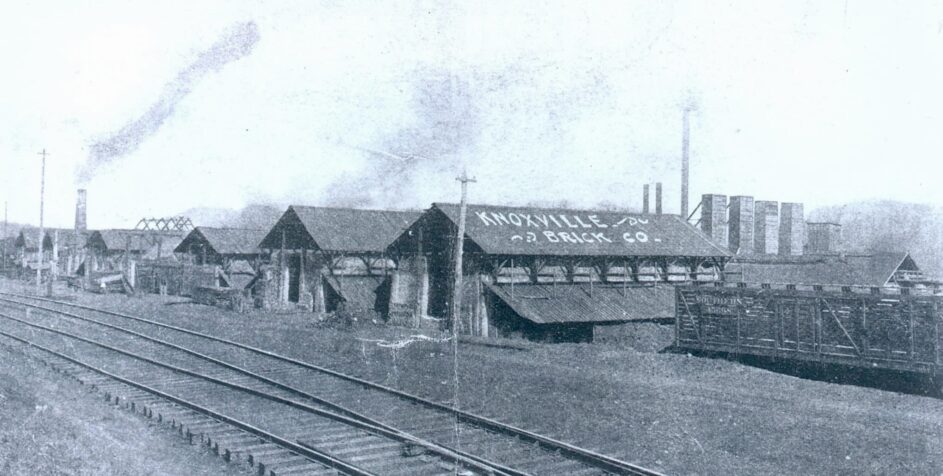The death knell sounded in September 1928: the Knoxville Brick Company in Powell had been sold. A little more than a year before the Great Depression arrived with the tanking of the stock market in November 1929, the reason for the sale was a “lack of clay.”
While the reason seems odd considering East Tennessee is full of clay, the business that had been in operation for 42 years was shutting down. The land, buildings, equipment and an estimated 3 million bricks were purchased by H.E. Rogers from J. Powell Smith, D.C. Chapman, E.R. Maynard, et al as reported in The Knoxville News Sentinel.

The Knoxville Brick Company at Powell’s Station. Photo credit: McClung Digital Collection-Knox County Library
Perhaps the company had pulled as much clay as it could from the banks of Beaver Creek. The land holdings sat mostly on the south side of Emory Road at Brickyard Road, with part of its factory sitting roughly where the Bojangles sits today along Emory going east, with operations extending west into what is now Powell Station Park.
The company was founded in 1888 by Daniel A. Carpenter. He purchased 750 acres of land along the Southern Railroad running adjacent to Emory Road. The brick kilns lined the road with the clay shops in the rear towards Beaver Creek. The company had its own private railroad, known as the Dinky Line, that hauled clay up from Beaver Creek.
There are few remnants left from the thriving business that used to be there, but old bricks are occasionally hauled up out of the creek or surface in the yards of homes in the vicinity. A brick trestle from the Dinky line still stands over a wet-weather stream near the disc golf course at Powell Station Park.

Knoxville Brick Co. ad from the Knoxville News Sentinel, July 10, 1923.
At one time, 70-90 men were regularly employed there and had the benefit of working with the most modern equipment Carpenter could get his hands on. Initial production was around 75,000 bricks daily, but by the turn of the century that number was up to 200,000 along with an expansion in the brick options being offered. The company offered sidewalk, terra cotta, facing, and roadway along with dry-pressed common brick.
By 1904, however, production was falling. By the 1920s, post World War I, a new era of architecture was taking hold. Art Deco was all the rage, with new construction leaning more into concrete, steel and glass than traditional brick. Clay or no clay, brick just wasn’t as in demand anymore.

The 1903 Sanborn Map of Knoxville Brick Company location.
By the early 30s, the country was immersed in the Great Depression. In June of 1934, the 800 acres of what was then called Powell Gardens – “A Good Place to Live – and Make a Living” – were sold at public auction by the Interstate Land Company. From one to 100 acres, the sale offered easy finance terms and $100 in prizes. Those attending the auction were entertained by a brass band, fed lunch by the “ladies of Powell Station,” while the auction was handled by Wheeler D. Samples.
The lot was purchased by General Shale in 1934, but by the next year other real estate transfers of Knoxville Brick property were being reported in the KNS, including 153 acres to R.T. Lyons and a vacant lot to Dr. M.F. Cruze.
Beth Kinnane is the community news editor for KnoxTNToday.com
Sources: The Knoxville News Sentinel digital archives, September 1928, June 1934, January 1935
An Historical and Archaeological Study of Brickmaking in Knoxville and Knox County, Tennessee – Gail Guymon, University of Tennessee, Tennessee Research and Creative Exchange

